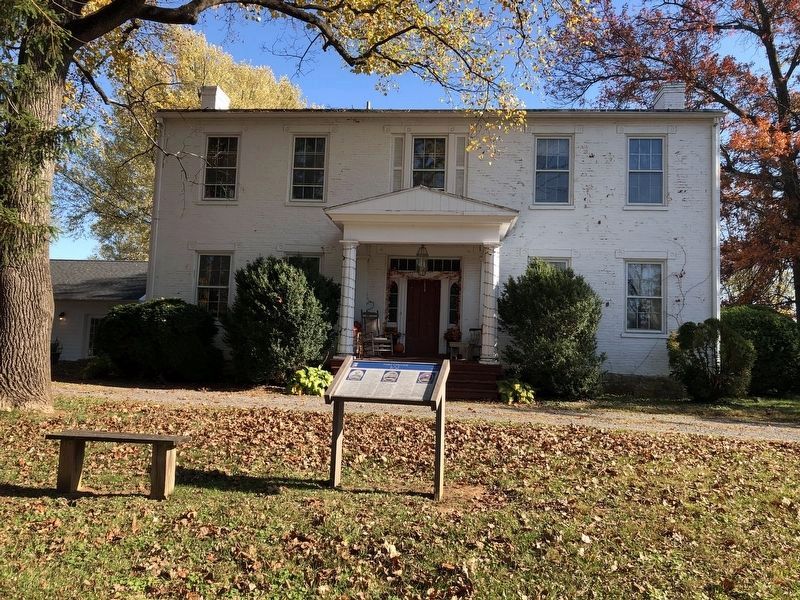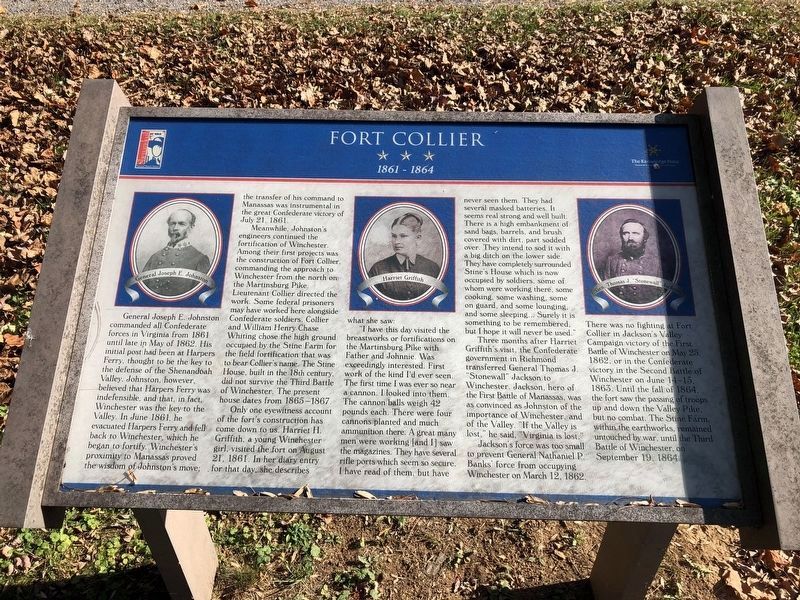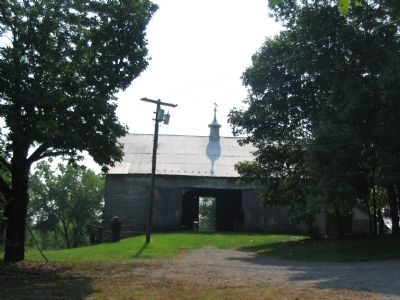Near Winchester in Frederick County, Virginia — The American South (Mid-Atlantic)
Fort Collier
1861 - 1864
General Joseph E. Johnston commanded all Confederate forces in Virginia from 1861 until late in May of 1862. His initial post had been at Harpers Ferry, thought to be the key to the defense of the Shenandoah Valley. Johnston, however, believed that Harpers Ferry was indefensible, and that, in fact, Winchester was the key to the Valley. In June 1861, he evacuated Harpers Ferry and fell back to Winchester, which he began to fortify. Winchesterís proximity to Manassas proved the wisdom of Johnstonís move; the transfer of his command to Manassas was instrumental in the great Confederate victory of July 21, 1861.
Meanwhile, Johnstonís engineers continued the fortification of Winchester. Among their first projects was the construction of Fort Collier, commanding the approach to Winchester from the north on Martinsburg Pike. Lieutenant Collier directed the work. Some federal prisoners may have worked here alongside Confederate soldiers. Collier and William Henry Chase Whiting chose the high ground occupied by the Stine Farm for the field fortification that was to bear Collierís name. The Stine House, built in the 18th Century, did not survive the Third Battle of Winchester. The present house dates from 1865-1867.
Only one eyewitness account of the fortís construction has come down to us. Harriet H. Griffin, a young Winchester girl, visited the fort on August 21, 1861. In her diary entry for that day, she describes what she saw:
“I have this day visited the breastworks or fortifications on the Martinsburg Pike with Father and Johnie. Was exceedingly interested. First work of the kind Iíd ever seen. The first time I was ever so near a cannon. I looked into them. The cannon balls weigh 42 pounds each. There were four cannons planted and much ammunition there. A great many men were working [and I] saw the magazines. They have several rifle ports which seem so secure. I have read of them, but have never seen them. They had several masked batteries. It seams real strong and well built. There is a high embankment of sand bags, barrels, and brush covered with dirt, part sodded over. They intend to sod it with a big ditch on the lower side. They have completely surrounded Stineís House which is now occupied by soldiers, some of whom were working there, some cooking, some washing, some on guard, and some lounging and some sleeping... Surely it is something to be remembered but I hope it will never be used.”
Three months after Harriet Griffithís visit, the Confederate government in Richmond transferred General Thomas J. “Stonewall” Jackson to Winchester, Jackson, hero of the First Battle of Manassas, was as convinced as Johnston of the importance of Winchester, and of the

Photographed By Devry Becker Jones (CC0), November 6, 2020
2. Fort Collier Marker
The marker is in front of the Stine House.
Jacksonís force was too small to prevent General Nathaniel P. Banksí force from occupying Winchester on March 12, 1862. There was no fighting at Fort Collier in Jacksonís Valley Campaign victory of the First Battle of Winchester on May 25, 1862, or in the Confederate victory in the Second Battle of Winchester on June 14-15, 1863. Until the fall of 1864, the fort saw the passing of troops up and down the Valley Pike, but no combat. The Stine Farm, within the earthworks, remained untouched by war, until the Third Battle of Winchester, on September 19, 1864.
Erected by Shenandoah at War / The Knowledge Point.
Topics. This historical marker is listed in these topic lists: Forts and Castles • War, US Civil • Women. A significant historical date for this entry is March 12, 1862.
Location. 39° 12.085′ N, 78° 9.207′ W. Marker is near Winchester, Virginia, in Frederick County. Marker can be reached from the intersection of Martinsburg Pike (U.S. 11) and Brooke Road (County Route 1322), on the right when traveling north. Located on the east side of the walking loop around Fort Collier, in the Fort Collier Civil War Center. In front of the Stine House. Touch for map. Marker is at or near this postal address: 922 Martinsburg Pike, Winchester VA 22601, United States of America. Touch for directions.
Other nearby markers. At least 8 other markers are within walking distance of this marker. Third Battle of Winchester (within shouting distance of this marker); The Cavalry Charge at Fort Collier (within shouting distance of this marker); Lt. Collierís Earthworks (within shouting distance of this marker); a different marker also named Fort Collier (about 300 feet away, measured in a direct line); a different marker also named Fort Collier (about 500 feet away); George Washington in Winchester (about 500 feet away); 2nd Battle of Winchester / 3rd Battle of Winchester (about 600 feet away); 2nd Battle of Winchester (about 600 feet away). Touch for a list and map of all markers in Winchester.
More about this marker. The marker displays portraits of General Joseph E. Johnston, Harriet Griffith, and General Thomas J. “Stonewall” Jackson.
Regarding Fort Collier. The related markers section links the Civil War Trails marker and the four interpretive markers located at the Fort Collier Civil War Center.
Related markers. Click here for a list of markers that are related to this marker. To better understand the relationship, study each marker in the order shown.
Also see . . . Fort Collier Civil War Center. Website homepage (Submitted on September 14, 2007, by Craig Swain of Leesburg, Virginia.)
Credits. This page was last revised on January 7, 2023. It was originally submitted on September 14, 2007, by Craig Swain of Leesburg, Virginia. This page has been viewed 1,985 times since then and 37 times this year. Photos: 1, 2. submitted on November 7, 2020, by Devry Becker Jones of Washington, District of Columbia. 3. submitted on September 14, 2007, by Craig Swain of Leesburg, Virginia. • J. J. Prats was the editor who published this page.

